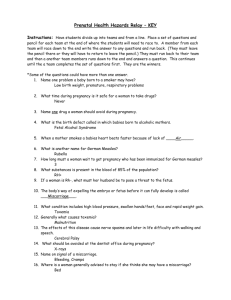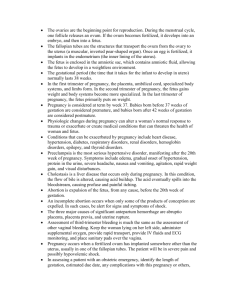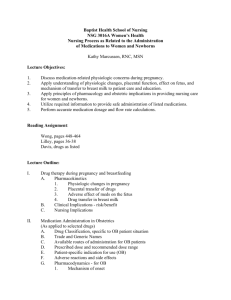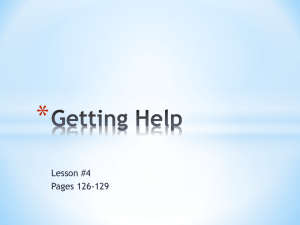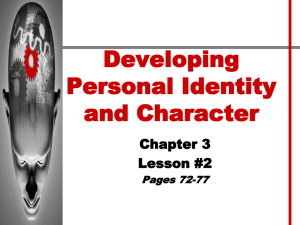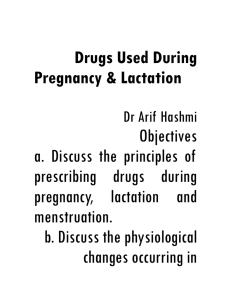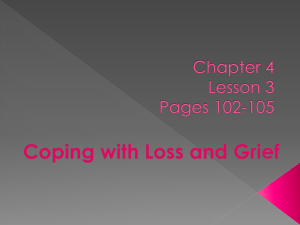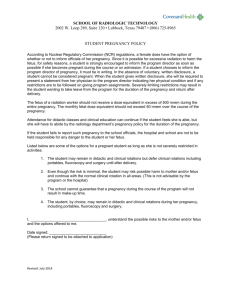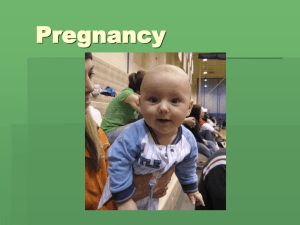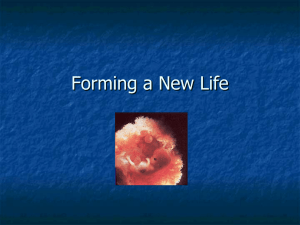The Beginning of the Life Cycle
advertisement
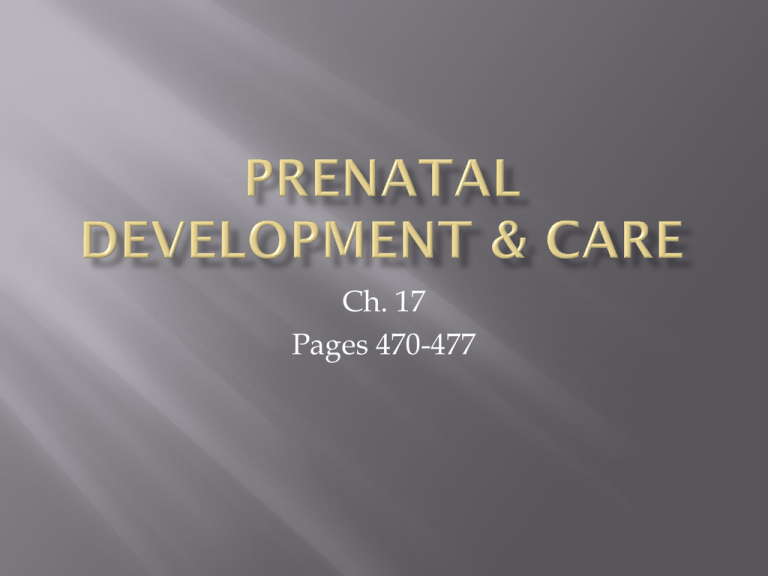
Ch. 17 Pages 470-477 1. 2. 3. 4. 5. 6. 7. Open: iSwifter APP Open the Bookmark and choose: Organize Open: Glencoe web link Drop Down: “Chapter Activities” Choose: “Chapter 17” Open: “Interactive Study Guide” Open: “Lesson 1” http://glencoe.com/sites/common_assets/health_fitn ess/glencoe_health_09/isg/GH_ch17.1_550x390.swf Objective 1: Identify the stages of fetal development from conception through pregnancy and birth. Objective 2: Explain how a pregnant female transfers nutrients and other substances to her fetus. Objective 3: Understand the difference between identical and fraternal twins Objective 4: Identify ways to keep the fetus healthy. Objective 5: Identify possible complications of pregancy The Very Beginning Fertilization: The union of a male sperm and a female egg. The cell is now called a zygote Embryo: A cluster of cells that develop between the 3rd and 8th week of pregnancy. Fetus: Group of developing cells after the 8th week. Amniotic Sac: A thin, fluid-filled membrane that surrounds and protects the developing baby. Umbilical Cord: A ropelike structure that connects the fetus with the mother’s placenta. Placenta: A thick, blood-rich tissue that lines the walls of the uterus during pregnancy and nourishes the embryo. The 9 months are divided into 3 trimesters. SEE PAGE 472 Identical twins: result when a single egg has been fertilized by one sperm and forms two embryos. Identical twins have the same genetic information, are the same gender, and look almost exactly the same. Fraternal twins: result when the ovaries release two eggs and are fertilized by two separate sperm. Each twin has a different genetic make up and they may or may not be of the same gender, and they do not look the same. Miscarriage: The spontaneous expulsion of a fetus that occurs before the twentieth week of pregnancy. (baby no longer develops and female has her period) Stillbirth: A dead fetus expelled from the body after the twentieth week. Women who use tobacco or drugs during pregnancy are more likely to experience a miscarriage or stillbirth. A miscarriage or stillbirth doesn’t mean the mother did something wrong Ectopic Pregnancy: The zygote implants itself in the fallopian tube, ovary, or cervix. 1. 2. 3. Labor: Muscle contractions of the uterus and causes the cervix to open. Delivery: Baby passes through the birth canal. Afterbirth: The placenta is still attached to the baby by the umbilical cord. Contractions continue until the placenta is pushed out. Double click the title to watch video. 1. 2. 3. 4. 5. 6. 7. Open: iSwifter APP Open the Bookmark and choose: Organize Open: Glencoe web link Drop Down: “Chapter Activities” Choose: “Chapter 17” Open: “Interactive Health Tutor” Open: “Chapter 17a” http://glencoe.com/olc_games/game_engine/content /gln_health/gln_health_09/conc_game/english/ch17a /index.html
